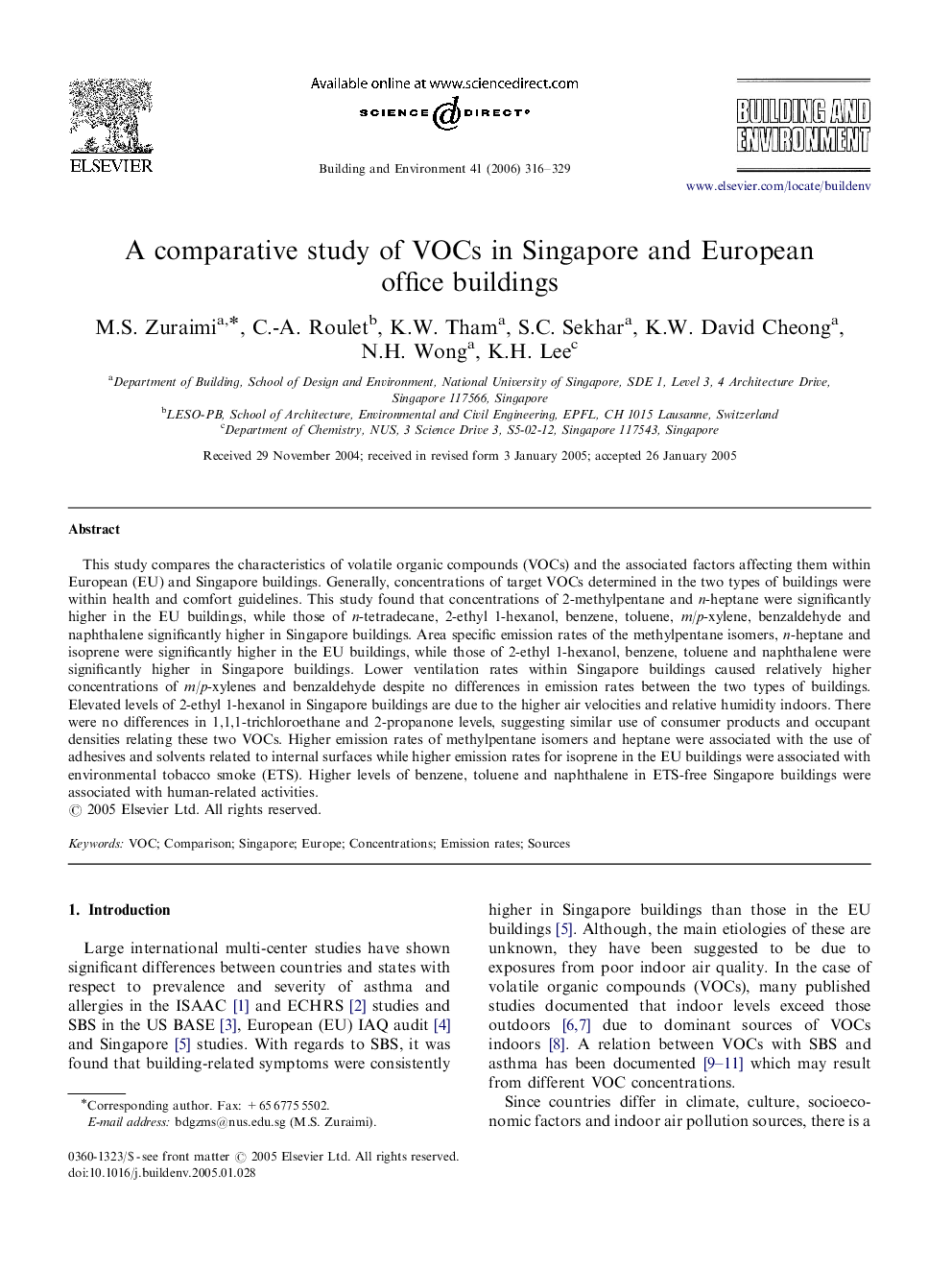| Article ID | Journal | Published Year | Pages | File Type |
|---|---|---|---|---|
| 250475 | Building and Environment | 2006 | 14 Pages |
This study compares the characteristics of volatile organic compounds (VOCs) and the associated factors affecting them within European (EU) and Singapore buildings. Generally, concentrations of target VOCs determined in the two types of buildings were within health and comfort guidelines. This study found that concentrations of 2-methylpentane and n-heptane were significantly higher in the EU buildings, while those of n-tetradecane, 2-ethyl 1-hexanol, benzene, toluene, m/p-xylene, benzaldehyde and naphthalene significantly higher in Singapore buildings. Area specific emission rates of the methylpentane isomers, n-heptane and isoprene were significantly higher in the EU buildings, while those of 2-ethyl 1-hexanol, benzene, toluene and naphthalene were significantly higher in Singapore buildings. Lower ventilation rates within Singapore buildings caused relatively higher concentrations of m/p-xylenes and benzaldehyde despite no differences in emission rates between the two types of buildings. Elevated levels of 2-ethyl 1-hexanol in Singapore buildings are due to the higher air velocities and relative humidity indoors. There were no differences in 1,1,1-trichloroethane and 2-propanone levels, suggesting similar use of consumer products and occupant densities relating these two VOCs. Higher emission rates of methylpentane isomers and heptane were associated with the use of adhesives and solvents related to internal surfaces while higher emission rates for isoprene in the EU buildings were associated with environmental tobacco smoke (ETS). Higher levels of benzene, toluene and naphthalene in ETS-free Singapore buildings were associated with human-related activities.
